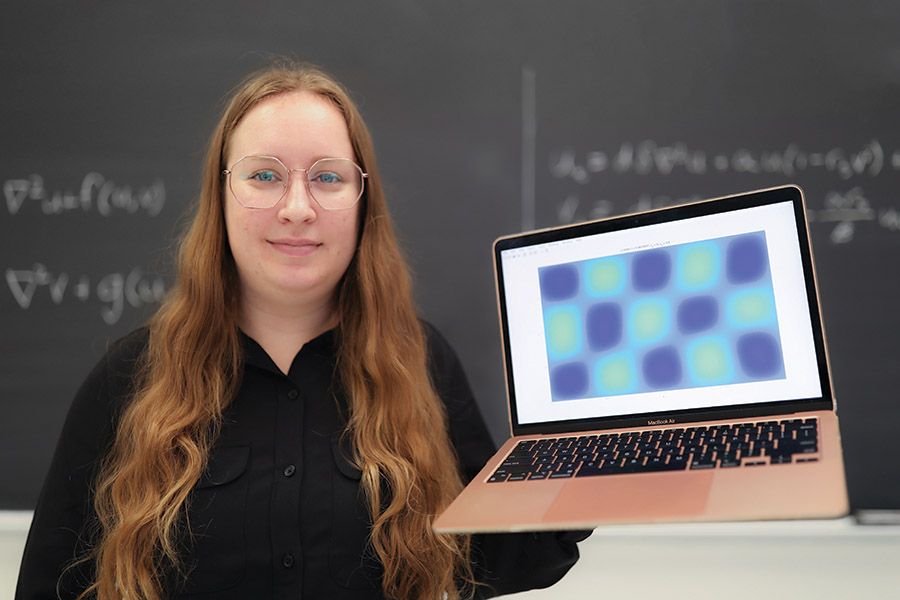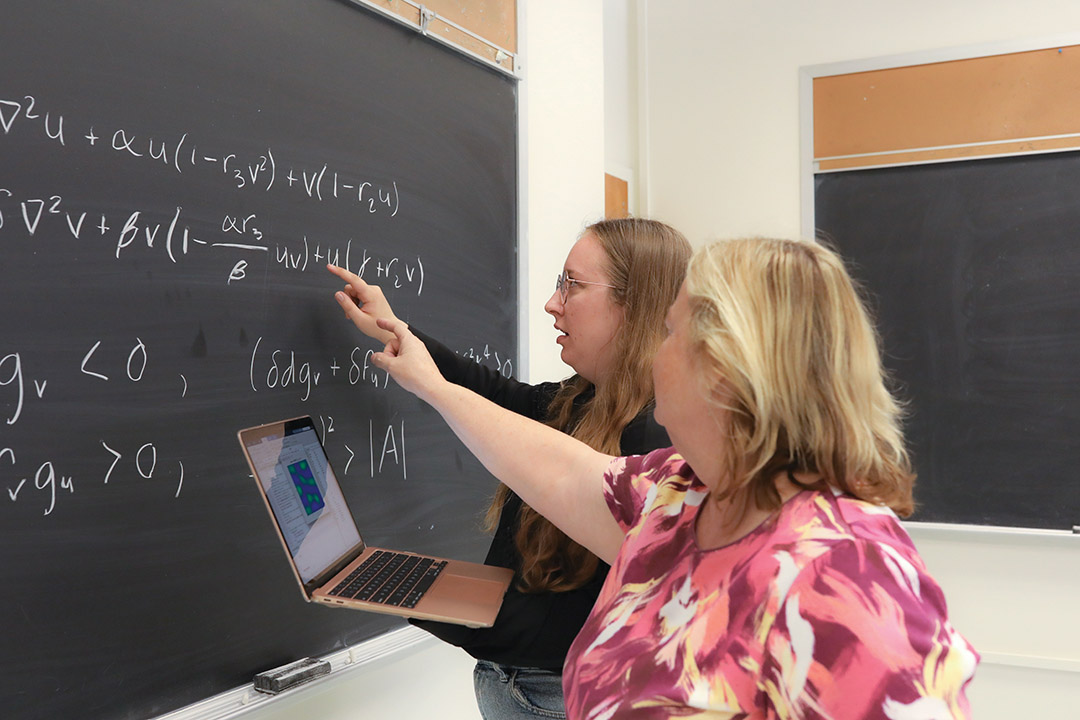Brain Storm
Biomathematics student Amelie Thompson uses computer modeling to investigate brain fold formation

A brain is a brain, right? Each of us has those three pounds of gray matter that make us who we are, from controlling the body’s operating systems to storing cherished memories to helping us navigate daily life. But the ultimate shape of the brain, with its intricate patterns of folds, might be able to be used to predict if someone will live with healthy brain function or if they will likely experience neurological disorder.
Florida State University student Amelie Thompson has always been fascinated by the brain and its complexity, and she’s using her combined interests in mathematics and biological science to understand how brains take shape and predict when problems may arise.
Thompson, a rising junior, is majoring in biomathematics, an interdisciplinary program in the FSU Department of Mathematics that prepares graduates for biomedical professions, such as careers in mathematical biology, scientific analysis and pharmaceutical research, and pathways to medical school.
“Biomathematics is so important because it shows the essential role that mathematics plays in the world around us,” Thompson said. “Mathematics can change lives in its different applications, such as detecting certain health disorders before symptoms become apparent.”
Since January, Thompson has conducted research in professor of mathematics Monica Hurdal’s lab, Modeling the Brain. Thompson is working on an Honors in the Major thesis, which encourages students to explore their major disciplines in greater depth by completing a research or creative project. Thompson is studying and modifying computer-coded models to learn how specific chemical conditions can lead to different patterns of folds in the human brain.

“I wanted to conduct some sort of research and contribute to the depth of our scientific knowledge, and the Honors in the Major program made this possible for me,” Thompson said.
In high enough concentrations, these chemicals, or morphogens, will trigger the body to create patterns in its tissue through a process called morphogenesis. Some of these conditions Thompson is modeling include the concentrations and locations of morphogens, as well the initial shape of the brain and how fast it grows.
“I was drawn to brain folds because certain abnormalities in folding patterns are associated with brain function and neurological disorders such as schizophrenia, autism and epilepsy,” Thompson said. “If these disorders can be linked to specific abnormalities in brain folding, it may be possible to identify these disorders long before symptoms present themselves, as cortical folding takes place early in brain development. This could help prevent the suffering associated with undiagnosed disorders that require intervention, medical or otherwise.”
The human brain’s folds develop during the second and third trimesters of pregnancy in specific, unique patterns due to the diffusion of morphogens. While these chemicals must be in high enough concentrations to trigger a reaction, such as the formation of brain folds, their distribution is rarely, if ever, uniform. Thompson studies the effects that this lack of uniformity has on brain fold formation by using a mathematical model that describes how morphogens diffuse.
“I love working with Amelie because she takes charge of her learning. She’s very ambitious and tackles new ideas with enthusiasm,” Hurdal said. “Amelie is helping to push the research in my lab forward by implementing and testing important simulation results related to brain folding pattern development, and her contributions will help provide a better understanding of parameters in models we use and how those parameters may influence brain folding patterns.”
The model Thompson uses to investigate brain fold patterning consists of mathematical equations that have been adapted for computer code, allowing her to research the effect chemical diffusion has on the formation of cortical folds. Through the work, Thompson was surprised to learn brain fold patterns develop similarly to animals’ coat patterns, like spots or stripes.
“Something I find particularly interesting about my research is how mathematical models can be implemented in computer code to produce graphs that explain the results of the model,” Thompson said. “Working in Dr. Hurdal’s lab allows me to learn more about the enigma of the brain and gain insight into its function and development.”
Following her anticipated spring 2024 graduation, Thompson plans to pursue a graduate degree in biomathematics and hopes to continue her education at FSU.
“The prospect of identifying undiagnosed disorders is my motivation,” Thompson said. “As someone who lives with a mental illness, one of the hardest parts is finding a correct diagnosis. Not only does a lack of diagnosis make forming a treatment plan difficult, it can also lead to self-doubt about one’s personal experiences. If it were possible to anticipate these disorders, maybe even before symptoms present, it would be easier for patients to receive treatment and avoid many obstacles that occur when seeking a proper diagnosis.”

